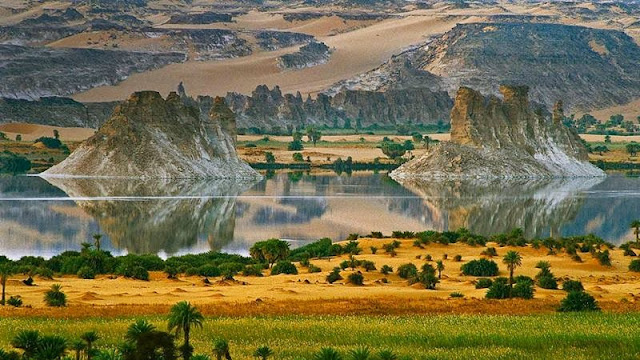Lakes of Ounianga in the Sahara Desert
The 18 lakes altogether, in two groups about 40 km apart. They vary greatly in chemical composition, some being so salty that they can only support the most basic forms of life, while others are fresh enough to provide habitat for aquatic plants, fish and a diversity of other species. The largest and most biologically important lake is Lake Teli and it has a surface area of 4.4km2 and a maximum depth of 10 meters. Its water is fresh, and supports an abundance of life. The sandy substrate is highly porous, so water flows freely underground between Lake Teli and 13 other smaller lakes in the eastern group. Further west, across the dunes and sandstone ridges that characterise this part of the Sahara, the second group of four lakes (known as Ounianga Kebir) is found, dominated by Lake Yoan (3.6 km2 and 27 m deep). This is a hyper saline lake which supports only algae and a few other micro-organisms. Rocks around its shores are encrusted in white salt deposits, and a sprawling village of some 9,000 people is spread amongst the nearby hills and dunes. There is a customs post, as this is the last habitable place on the main trans-Sahara truck route through to Libya





